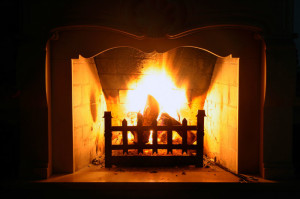Here at Environmental Chimney Sweep, we love coming to your home and performing yearly maintenance on your chimney and firebox. Inspecting for potential fire hazards and creosote buildup gives us the satisfaction that we have done the best job on our end of the deal. For you, there are several key points that will make a big difference in the use of your fireplace.
Before starting a fire in your fireplace, it is imperative that everything is working at its highest level of performance. Meaning, every piece of the flue system and the firebox itself should be ready to handle the most strenuous of inspections. Prior to grabbing for the firewood, it’s important to remember these key steps:
- Check your damper: Above your firebox lives a lever or pull cord that controls the flow of smoke and air in and out of the flue system. The damper should open and close easily with a pull of the lever or cord. Test this function before considering lighting a fire. If the damper is difficult to open, it may not expand enough for proper carbon monoxide ventilation. If it is difficult to close, cold air could easily circulate into the room.
- Dispose of ash: If there is leftover ash beneath the grate of your firebox, it is important to remove all but about an inch of it. A small amount of ash can insulate wood coals and distribute heat more evenly, but too much and it does quite the opposite. Slowly scooping the cool ash from the firebox to a bucket or trash can will make more room for wood, as well as reduce the chances of all that extra ash pushing an ember onto your floor.
- The three foot rule: Move anything flammable, including rugs, wall hangings, curtains, baskets, stuffed animals, or anything that a flying spark could ignite, away from your hearth. This also applies to children and pets, who might be attracted to the warm glow. It might be a good idea to invest in a screen to protect them while a fire is being burned.
- Firewood: Don’t settle for just any old tree. Look for hardwoods like oak or maple rather than softwoods like pine trees or spruce. Softwoods release sap and extra buildup when burned, and the buildup then accumulates on the inner lining of your chimney. This creosote is easily ignited, and is dangerous to have, especially during the winter season.
Once your fireplace is ready to receive a roaring fire, remember to never use a liquid fire starter such as gasoline and be patient when lighting the fire. Don’t use massive amounts of paper, but rather slowly ignite the logs with kindling. We want you to enjoy using your fireplace, and keeping it regularly maintained is the most important step in making that happen.

